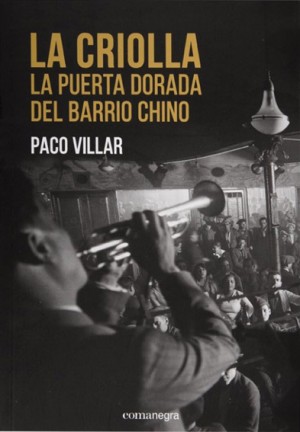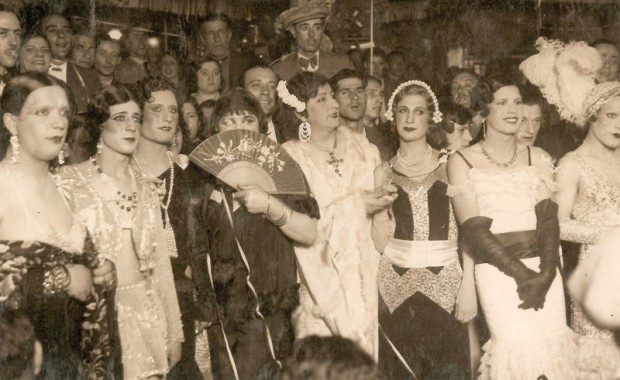 Somorrostro. Mirades literàries
Somorrostro. Mirades literàries
Selection and presentation of texts: Enric H. March
Publisher: Barcelona City Council
163 pages
Barcelona, 2018
Somorrostro was inhabited by a working population that was all too often looked upon as marginalised people who did nothing to escape their condition. The quality of the photographs and the variety of texts in the book –literary excerpts and chronicles– make up the unique map of a massive settlement of huts that survived until 1966.
It is surprising to reach the text by J. Ruiz de Larios. This text makes reference to the intensity of the colours of this neighbourhood without light or water which, in 1935, he explores at the request of La Vanguardia newspaper. Because the first image of Somorrostro which comes to mind is in black and white, in greys which sadden and whites which suggest that, when looked at closely, on that great stretch of sand and under the sun, they would harm one’s sight.
Curiosities of our memory: having questioned several people (including myself) they answer that the film Los Tarantos (1963), by Francesc Rovira i Beleta, was filmed in black and white. But Antonio Gades and Carmen Amaya (daughter of these huts, to which she returned to in 1951; and of that triumphant return, here is the chronicle of Sempronio) moved amidst scenarios of an unusual colour, somewhat yellowish. Like the sandy ground on which people with and without work erected no less than 2,357 huts that gave shelter to about 18,000 people.
The seafront promenade, the construction of which began in 1957, ended abruptly at the site where today we see the Hospital del Mar. And then came an abyss. Here lay that neighbouring land limited by the sea and, at the back, by the gas plant. The native of the Barceloneta district, Arturo San Agustín, in his book En mi barrio no había chivatos, retrieves his childhood fascination for that area which he glimpsed nearby, just a few steps away if he jumped from his window. A gradual settlement, one of eternal provisional status, accessed by overcoming mountains of cans and smell of sewage. Which began in the 19th century and lasted for about a hundred years, with a mind-blowing end.
In the interesting introduction to these texts sought and chosen by Enric March, literary fragments and journalistic chronicles, which spoke of inhabitants of working class families who “all too often were seen as marginal individuals who did nothing to escape their condition”. In this sense, the article printed by El Correo Catalán considered the neighbourhood as a “realisation of the underworld of Barcelona” that had to disappear. In the eyes of the Generalísimo Franco, according to the same newspaper, the huts “ruin the image of greatness of Barcelona, and of its citizenship and the diligence of its children”. For his part, a report of the works by the Parish of San Felix Africano, dated 1950-51, makes reference to an atmosphere of hatred. The worker “hates his life”, “has no inner peace”. The Work is concerned: Somorrostro encourages “the most shameful promiscuity” and is “the scenario of early sensualities”. While, despite prejudices, attempts are made to provide health care and education.
The other great idea is particular, literary: to the cited authors others are added such as Juan and Luis Goytisolo, Josep Maria Carandell, Juan Marsé, Blai Bonet, David Castillo, Sergio Vila-Sanjuán, Manuel Vázquez Montalbán, Joaquim Muntañola, Arturo Llopis, Antonio Rabinad, Xavier Benguerel, José Hierro and Terenci Moix. Each in his own way, with respect or stupor, with naturalness or morbid interest in this marginal population, they include us in this landscape through myriad details: “In the hut close to the sewage, a child crawled along the sand, with one foot tied to a rope and to the door of his home” (Juan Goytisolo).
The quality of the photographs –Joan Colom, Ignasi Marroyo, Jordi Pujol, François Papinaud, Josep Brangulí, Nicholas Jacobs, Colita, Agustí Centelles, Jacques Léonard– and the diversity of the texts form a map of light and sounds: the radios that can be heard from all of those huts built, in some cases, with solid brick, others with whatever was available. Rooms without windows or with slits. The young girl who spies from her small window on her neighbour while shaving (Mercè Rodoreda), the sun beating down and the men wearing hats made from newspaper pages. Half naked, snotty children, and gentlemen and hierarchies. People who make a living out of smuggling and girls such as Carmen Amaya heading towards the spring. The strumming of a guitar under the sun.
1957 saw the beginning of the works to dismantle that world of exiles in the name of “a great urban planning work with social projection”, the seafront promenade, which in its first phase swallowed up the huts closest to the Barceloneta, and in 1966 came the final destruction on the occasion of a military exhibition. The people were sent to Badalona, to the Sant Roc neighbourhood, still under construction. A shot by Carles Barba shows a simulation of a navy landing on those already rampaged beaches.
Today we walk on this very site.





